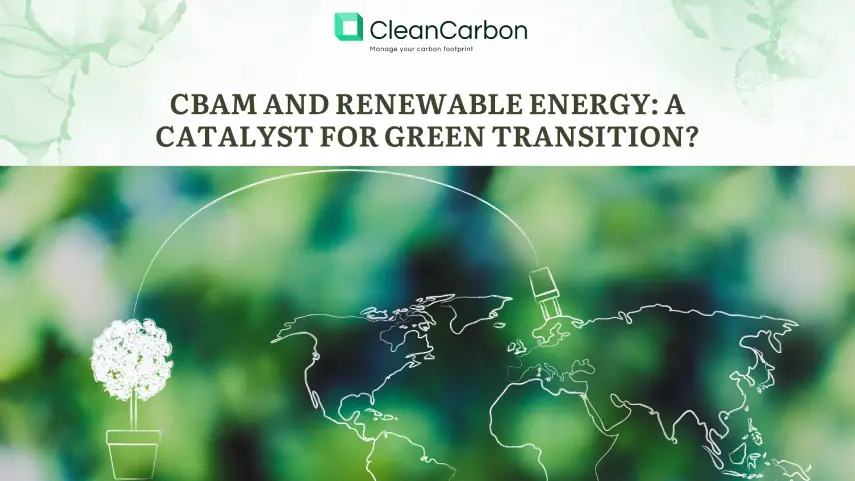The Carbon Border Adjustment Mechanism (CBAM) is more than just a trade policy—it’s a potential game-changer for the global energy landscape. By imposing a carbon cost on imported goods, CBAM could accelerate the adoption of renewable energy worldwide. But how exactly does this mechanism work, and what does it mean for the future of energy? Let’s break it down.
What is CBAM?
CBAM is a policy tool introduced by the European Union to level the playing field for EU businesses by imposing a carbon cost on imported goods like steel, cement, aluminum, and electricity. The goal is to prevent carbon leakage—where companies move production to countries with weaker climate policies—and encourage global decarbonization
How CBAM Drives Renewable Energy Adoption
1. Incentivizing Cleaner Production:
CBAM creates a financial incentive for exporters to reduce the carbon intensity of their products. For energy-intensive industries, this means shifting from fossil fuels to renewable energy sources like wind, solar, and hydropower. For example:
- Steel producers can use green hydrogen instead of coal.
- Cement manufacturers can power their plants with solar or wind energy.
- Electricity exporters can invest in renewable energy projects to meet CBAM requirements.
2. Boosting Demand for Green Electricity:
CBAM’s inclusion of electricity as a covered sector is particularly significant. Countries exporting electricity to the EU will need to demonstrate that their power comes from low-carbon sources. This could drive massive investments in renewable energy infrastructure, especially in regions with abundant solar, wind, or hydro potential.
3. Encouraging Global Policy Alignment:
4. Unlocking Green Investments
The financial pressure of CBAM could unlock new opportunities for green financing. Companies and governments may turn to green bonds, sustainability-linked loans, and other instruments to fund renewable energy projects. This influx of capital could accelerate the green transition.
Real-World Examples
- Morocco: Already a leader in solar energy, Morocco could expand its renewable capacity to export clean electricity to the EU, leveraging CBAM as an opportunity.
- India: With its ambitious renewable energy targets, India could position itself as a low-carbon exporter of goods like steel and aluminum, powered by solar and wind energy.
- Brazil: Its vast hydropower resources could make it a key player in supplying low-carbon electricity and green materials to the EU.
Challenges and Considerations
While CBAM has the potential to drive renewable energy adoption, it’s not without challenges:
- Equity Concerns: Developing countries may lack the resources to invest in renewable energy infrastructure, potentially widening the global energy divide.
- Trade Tensions: CBAM could spark disputes with trading partners who view it as a barrier to trade rather than a climate tool.
- Implementation Complexity: Measuring and verifying the carbon intensity of electricity and other goods requires robust systems and international cooperation.
The Bigger Picture: CBAM as a Catalyst
CBAM is more than just a policy—it’s a catalyst for systemic change. By linking trade to carbon emissions, it creates a powerful economic incentive for renewable energy adoption. However, its success depends on:
- Global Collaboration: Working with trading partners to ensure a fair and equitable transition.
- Support for Developing Countries: Providing financial and technical assistance to help them build renewable energy capacity.
- Complementary Policies: Pairing CBAM with domestic renewable energy incentives, carbon pricing, and green innovation funding.
What’s Next?
As CBAM rolls out, businesses and governments must seize the opportunity to lead the green transition. Here are a few questions to consider:
- How can your organization leverage CBAM to accelerate renewable energy adoption?
- What role can technology play in enabling a low-carbon energy transition?
- How can we ensure that the benefits of CBAM are shared equitably across the globe?
CBAM is a wake-up call for the world to embrace renewable energy and decarbonize global trade. By turning challenges into opportunities, we can build a sustainable, competitive, and resilient future.
What’s your take on CBAM’s role in accelerating the green transition? Share your thoughts in the comments!


